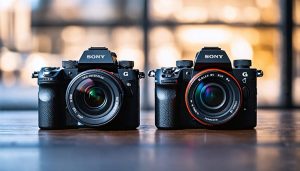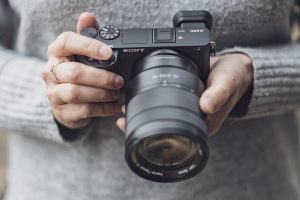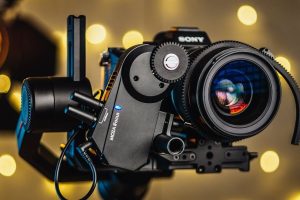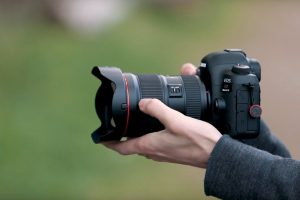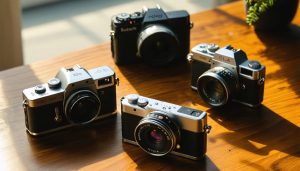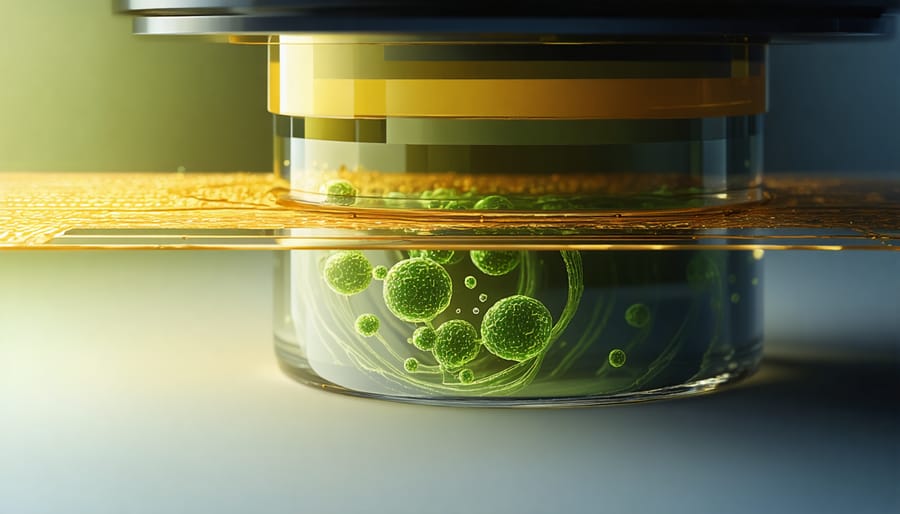
Understanding focal length in oil-immersion microscopy stands as a cornerstone of achieving optimal resolution and clarity in high-magnification observations. When light travels through different media – from glass to oil to specimen – the precise relationship between focal length and numerical aperture becomes critical for capturing the finest structural details at the microscopic level. Oil immersion objectives, typically operating at 100x magnification, require careful consideration of focal length to maximize their resolving power, which can reach theoretical limits as small as 0.2 micrometers.
The focal length of an oil-immersion objective directly impacts both the working distance and the ability to gather light from the specimen. By matching the refractive index between the objective lens and the specimen through immersion oil, microscopists can eliminate air gaps that would otherwise scatter light and reduce image quality. This relationship becomes particularly crucial when studying cellular structures, bacterial morphology, or other specimens requiring maximum resolution.
Professional microscopists recognize that mastering the interplay between focal length and oil immersion represents the difference between merely seeing a specimen and revealing its finest details with crystal clarity. Whether in clinical diagnostics, research laboratories, or educational settings, proper understanding of focal length ensures optimal performance from these sophisticated optical systems.
Understanding Focal Length in Microscopy
What is Focal Length?
In microscopy, focal length basics refer to the distance between the objective lens and the point where light rays converge to form a clear image. Think of it as the lens’s ability to bring specimens into sharp focus. For oil-immersion objectives, this distance is particularly critical because these high-power lenses work with extremely short focal lengths, typically less than 2mm.
The focal length directly affects how close the objective lens must be to your specimen to achieve optimal focus. With oil-immersion objectives, which commonly operate at 100x magnification, this distance becomes incredibly small. This close proximity is essential because it allows the lens to capture the maximum amount of light and detail from your specimen.
Understanding focal length helps you appreciate why the oil medium is so crucial – it maintains the precise optical conditions needed for these short focal lengths to work effectively. Without oil, the air gap would create distortions that prevent proper image formation at such close working distances.
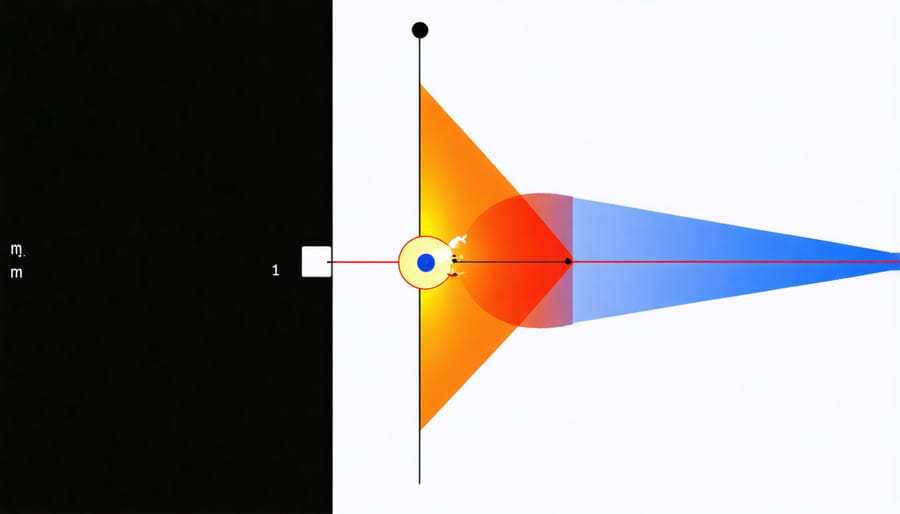
The Special Case of Oil-Immersion Objectives
Oil-immersion objectives represent a fascinating intersection of optical engineering and practical microscopy. When you place a drop of immersion oil between your specimen and the objective lens, you’re actually creating a continuous optical medium that dramatically affects how the focal length works. Unlike dry objectives, oil-immersion lenses are designed to operate with this special oil that has nearly the same refractive index as glass.
This unique setup means that light rays travel through the oil and into the lens with minimal bending or scattering, resulting in significantly improved resolution and image clarity. The focal length in oil-immersion objectives is particularly critical because it determines not only the magnification but also the working distance – the space between the front lens and your specimen.
Most oil-immersion objectives have very short focal lengths, typically less than 2mm, requiring careful focus adjustment. This short focal length, combined with the oil’s optical properties, allows these objectives to achieve the highest possible numerical aperture and resolution in light microscopy, making them invaluable for detailed cellular and molecular studies.
The Critical Role of Focal Length in Oil-Immersion Microscopy
Resolution and Image Quality
The relationship between focal length and image quality and resolution is crucial when using an oil-immersion objective. When light travels from the specimen through the oil and into the objective lens, the focal length determines how effectively these light rays converge to form a clear image. A shorter focal length in oil-immersion objectives allows for a higher numerical aperture (NA), which directly impacts the resolving power of your microscope.
Think of it like focusing a magnifying glass on a sunny day. The closer you bring the lens to the surface, the more concentrated and precise the light becomes. Similarly, oil-immersion objectives with optimal focal lengths can capture and focus more light rays, resulting in sharper details and better contrast in your specimens.
The working distance – the space between your specimen and the objective lens – becomes particularly critical here. Oil-immersion objectives typically have very short working distances, often less than 0.2mm. This close proximity, combined with the precise focal length, allows the objective to gather the maximum amount of light information from your specimen.
For the best results, it’s essential to use the correct immersion oil and maintain proper focus throughout your observation. Even slight variations in focal length can significantly impact your ability to resolve fine structural details in your specimens.
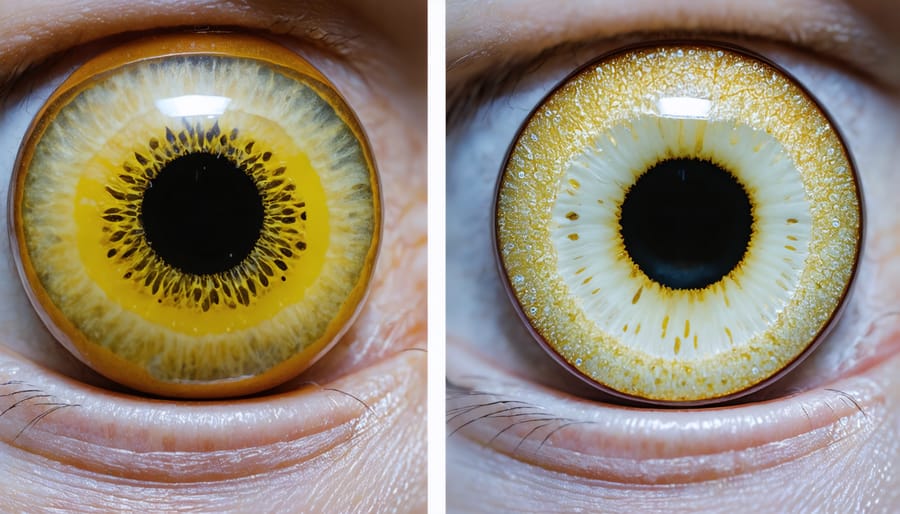
Working Distance Considerations
Working distance – the space between the objective lens and the specimen – is a crucial consideration when using oil-immersion objectives. As focal length decreases, which is typical with high-magnification oil-immersion objectives, the working distance becomes correspondingly shorter. This relationship directly impacts how you interact with your specimens and conduct your observations.
Most oil-immersion objectives have extremely short working distances, typically less than 0.2mm. This close proximity is necessary for achieving the highest possible resolution but requires careful attention during use. The short working distance means you’ll need to be particularly cautious when focusing to avoid contact between the objective and the slide, which could damage both.
The minimal working distance also affects your practical workflow. You’ll need to:
– Apply the immersion oil carefully to avoid bubbles
– Lower the objective slowly using the coarse focus
– Make final adjustments with only the fine focus
– Pay extra attention when moving between different areas of your specimen
Understanding this relationship helps prevent common mistakes, such as applying too much oil or focusing too quickly. While the short working distance might seem challenging at first, it’s a necessary trade-off for achieving the superior resolution that oil-immersion objectives provide. With practice, you’ll develop the muscle memory and confidence to work effectively within these constraints.
Light Gathering and Numerical Aperture
When it comes to oil-immersion objectives, focal length plays a crucial role in determining the light gathering capabilities of the lens system. Shorter focal lengths in oil-immersion objectives allow for larger numerical apertures (NA), which directly impacts how much light can be collected from the specimen.
Think of it this way: imagine trying to catch raindrops with a bucket. The wider the bucket’s opening (analogous to a larger NA), the more raindrops you’ll collect. Similarly, objectives with shorter focal lengths can achieve wider angles of light acceptance, resulting in better light collection from the specimen.
The relationship between focal length and light gathering is particularly important in oil-immersion objectives because they’re typically used for high-magnification work where every photon counts. The oil medium helps maintain this light-gathering efficiency by reducing light loss that would normally occur due to reflection and refraction at the air-glass interface.
For practical applications, this means that shorter focal length oil-immersion objectives can provide brighter, more detailed images, especially when working with fluorescent specimens or samples that emit limited light. However, it’s worth noting that these objectives also require more precise focusing and careful handling due to their extremely short working distances.
Practical Applications and Tips
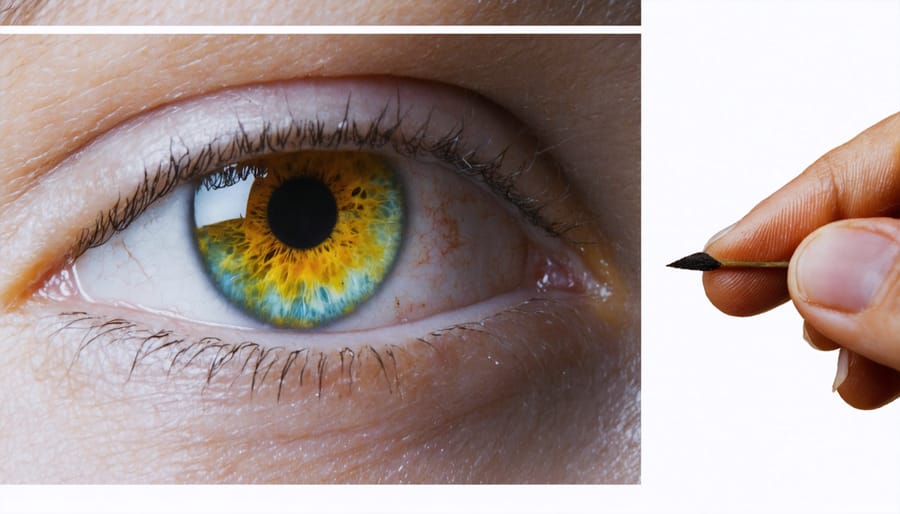
Optimal Focusing Techniques
Achieving optimal focus with an oil-immersion objective requires careful attention to detail and a systematic approach. Start by placing a drop of immersion oil on your prepared slide, ensuring it’s the correct type specified for your microscope. The oil should form a small dome without air bubbles, which can interfere with image quality.
Begin with the lowest power objective and focus on your specimen. Once you’ve located your area of interest, rotate the nosepiece carefully, allowing the oil-immersion objective to make contact with the oil drop. Watch from the side to ensure the lens doesn’t press too hard against the slide.
Now comes the critical focusing step. Start with the coarse focus knob, but use it very gently and only to bring the image roughly into view. Switch immediately to the fine focus knob once you see any detail. Turn the fine focus knob slowly while looking through the eyepiece, moving slightly past the point of best focus in both directions to find the optimal position.
A helpful technique is to use the “bracketing method”: Focus slightly above and below your specimen, then settle on the midpoint where the image appears sharpest. Pay attention to the working distance – the space between the objective lens and the slide should be minimal but not zero.
If you’re having trouble finding focus, check that your specimen is properly illuminated. Adjust the condenser height and aperture as needed. Remember that oil-immersion objectives typically require more light than dry objectives. Once focused, make only minor adjustments with the fine focus knob to maintain image clarity during observation.
Common Pitfalls and Solutions
When working with oil-immersion objectives, several common pitfalls can affect your microscopy results. One of the most frequent issues is using too much or too little immersion oil. Excess oil can seep into the mechanical parts of your microscope, while insufficient oil creates air bubbles that distort your image. The solution is to apply just one small drop of oil that creates a clean bridge between the lens and the specimen.
Air bubbles are another persistent challenge that can lead to common focusing issues. These typically occur when the slide makes contact with the objective too quickly or at an angle. To avoid this, slowly lower your objective using the coarse focus knob until it just touches the oil drop, then use only the fine focus adjustment.
Many microscopists struggle with oil contamination between objective lenses. This happens when switching objectives without properly cleaning the oil from the slide. Always clean your slide and objectives thoroughly with lens paper and appropriate cleaning solution before changing magnification levels.
The wrong type of immersion oil can also cause problems. Using oil with an incorrect refractive index will result in poor image quality. Always check your objective’s specifications and use the recommended immersion oil type.
Finally, remember that leaving oil on the objective after use can lead to hardened residue and potential damage. Make it a habit to clean your objectives immediately after each session, using proper lens cleaning materials to maintain optimal performance and extend the life of your equipment.
Understanding the relationship between focal length and oil-immersion objectives is crucial for achieving optimal microscope performance. Throughout this discussion, we’ve explored how focal length directly impacts image quality, working distance, and overall microscope functionality when using oil-immersion objectives.
Remember that the short focal length of oil-immersion objectives serves multiple essential purposes. It allows for higher numerical apertures, resulting in superior resolution and image clarity. The reduced working distance, while requiring careful technique, enables the objective to capture fine details that would otherwise be impossible to see with longer focal lengths.
In practice, successful use of oil-immersion objectives requires attention to several key factors. Always ensure you’re using the correct type and amount of immersion oil, maintain proper cleaning procedures, and exercise caution when focusing to avoid damage to your specimens or equipment. The relationship between focal length and the oil-immersion system is fundamental to achieving the highest possible magnification and resolution in microscopy.
For the best results, take time to perfect your technique and understand your equipment’s specifications. Whether you’re conducting research, studying specimens, or teaching others, mastering these concepts will significantly enhance your microscopy work. The extra effort invested in proper oil-immersion technique and understanding focal length relationships will consistently reward you with superior image quality and more reliable results.


